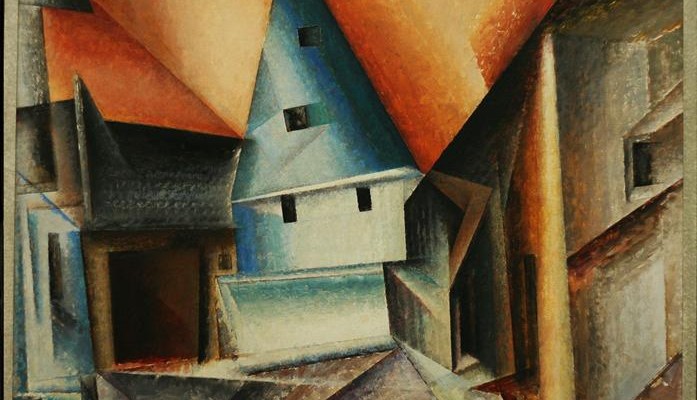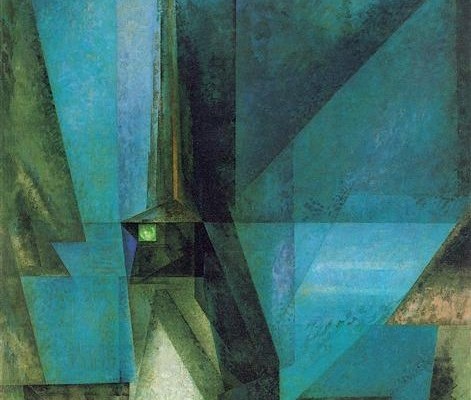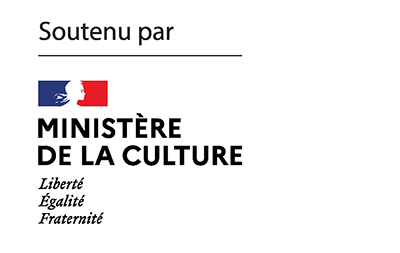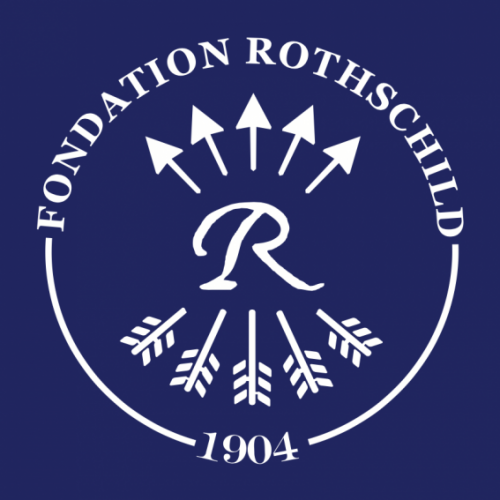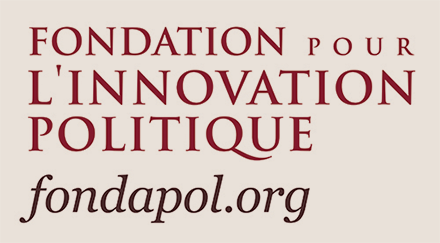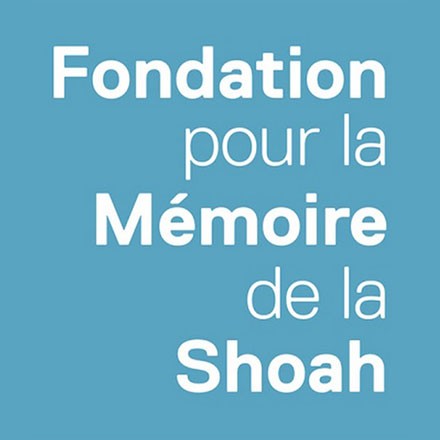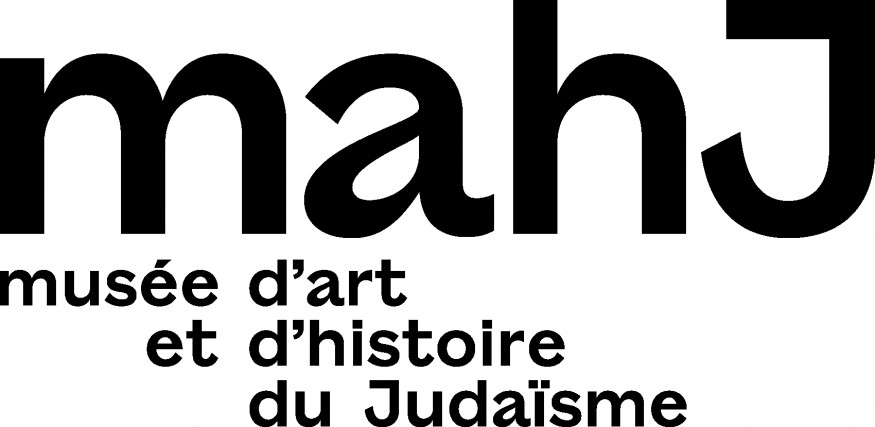Not only is a certain postcolonial thinking diametrically opposed to what can be considered left-wing politics, but it is an identity politics that threatens to destroy anti-colonial thinking itself – and would be structurally anti-Jewish. This is the idea that Horst Bredekamp, the great art historian, professor at Humboldt University Berlin, and one of the founders of the Humboldt Forum, maintains in an op-ed published in the Frankfurter Allgemeine Zeitung (FAZ) last March. This text has had a considerable impact on the German and English-speaking intellectual and media scene. We take it up in K., putting it in context: within a controversy about the ‘decolonization’ of art and museums.

Context:
A few months ago, the former president of the Bundestag, Wolfgang Thierse, published an article in the major German daily newspaper Frankfurter Allgemeine Zeitung (FAZ) castigating the turn toward identity politics of the German Social Democratic Party, (SPD).
As Thierse is himself a historical member of the SPD, the current party presidency found it necessary to publicly declare their “shame” at the stance taken by their comrade. What did they find shameful? Thierse called on the party to promote a politics that would produce real equalities instead of deepening the imaginary chasms that separate the different cultural identities gathered on German national territory; he was also concerned about a certain stranglehold of the so-called “postcolonial” discourses on the political and public discourse as a whole. Without going so far as to assert the existence of a German “cancel culture”, he deplored a tendency to want to wipe out the past, declaring the whole of European history guilty, and only guilty.
Thierse, before embarking on a late career as a politician, was an academic in the GDR. A Germanist by training, he worked first at the university and then for the GDR Ministry of Culture in the field of art history. After being dismissed from the ministry, he edited a dictionary of fundamental concepts of aesthetics and collaborated in writing scripts for documentary films. This partly explains why he was appointed to the commission in charge of the cultural reconstruction of the center of Berlin in 2001. The discussions at the time centered on whether or not to demolish the Palace of the Republic, which stood in the center of Berlin as an embarrassing legacy of the former GDR.
The Palace of the Republic, a jewel of Eastern architecture but deeply infested with asbestos, was erected in 1973 in place of the former Berlin Castle (i.e. the ancient seat of Prussian power). The latter was partially destroyed during the Second World War and finally demolished by the GDR in 1950.

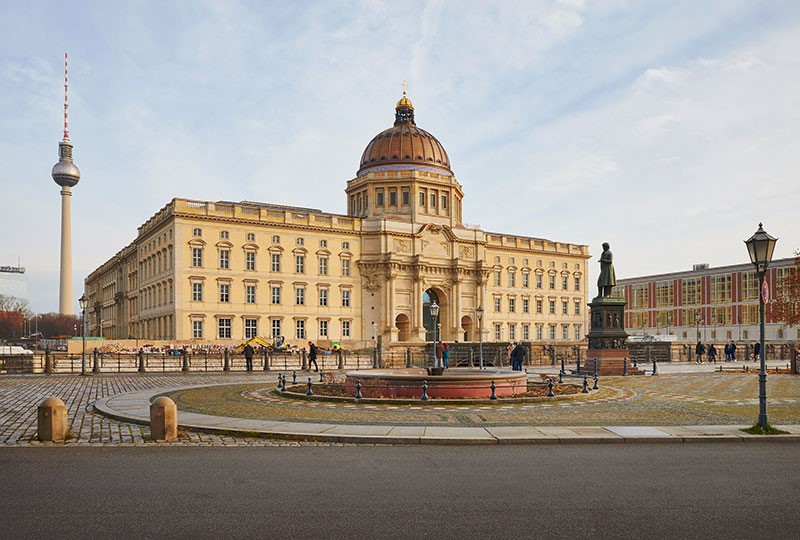
The commission decided to destroy what was perceived as a dictatorial relic and to rebuild the old Berlin Castle in its place. The idea was to rebuild it, but at the same time deactivate the imperial symbol it represented. To this end, it was proposed to install a museum dedicated not to the cultural superiority of Prussia, Germany or Europe, but to the greatness of all non-European cultures. The project was approved. Thus was born the Humboldt Forum, which today occupies the interior of the reconstructed Prussian castle in the center of Berlin.
Since 2001, political concerns have changed. The deeply ambivalent act of destroying a former symbol of the GDR, to which the East German population was in part sincerely attached, and erecting in its place an equally controversial symbol of the German Empire, is no longer of interest. What is at issue now is the interior of the castle: its ethnographic collections, their sometimes criminal origins, and their intrinsic connection to the imperial project embodied by the castle itself. It was as a member of the commission that created the Humboldt Forum that Thierse was confronted with the postcolonial discourse that he criticizes. He confronted it around a concrete object, which he knows well, and to which he reflected for at least two decades: the Humboldt Forum and its collections.
It is therefore not surprising to see another founding member of the Humboldt Forum come to his rescue in such a debate on identity politics. In this case it is a world-renowned art historian, Horst Bredekamp. Once the political emotion had subsided, he too took up the pen in the FAZ. His aim was to measure the price of postcolonial thought and criticism. In order to conduct his accounting analysis, he too speaks of the concrete object Forum Humboldt.
We reproduce the FAZ article in K., accompanied by an interview with him. Bredekamp’s intervention testifies to the exorbitant cost of a certain postcolonial thought, precisely that which Thierse dared to criticize, which, according to him, consists in the oblivion of a European Jewish thought. This oblivion is identical to its negation, even to its assimilation to the general European guilt. – Julia Christ
Horst Bredekamp: “The Identitarian Madness Is What Menaces Us Most”

Wolfgang Thierse and I are the last two people still active who have pursued and accompanied the conception and realization of the Humboldt Forum for exactly twenty years now. It is hard to imagine the atmosphere of novelty, freedom, wildness and openness that was almost physically palpable in the so-called Swoboda Commission, which was at the origin of the Humboldt Forum. The idea of tying together the Humboldt University as a subsidiary foundation of the Kunstkammer of the Berlin Palace[1], the Berlin libraries and the non-European collections of Dahlem in a collective endeavor dedicated to the free, politically independent and controversial spirit enamored all involved. At the moment, however, it is reduced to a single formula that must justifiably be called a delusion: the Humboldt Forum as a fortress of looted art.
There is no alternative to anti-racism and anti-colonialism, and the sensitivity of the young generation in particular gives hope for the future. That the Federal Republic has been blind to the colonial side of German history cannot be consistently asserted, but the strengthening of awareness of this side of its history is of real value. From the beginning, however, it was apparent that the hard core of so-called postcolonialism, while using leftist rhetoric, is driven by principles and goals diametrically opposed to defining what can be considered “leftist” politics. The phrases of self-determination were and are the coercive means of a totalitarian grip on language, history and the future. Particularly perverse is the erasure of an anti-colonial tradition in which the Humboldt Forum was and is willing to place itself.
A cultural concept of huts, not palaces[2]
I discussed several times with Wolfgang Thierse how the great halls in the Humboldt Forum should be honoured by name. In the first place, my suggestion was Aby Warburg and Franz Boas[3], the two great Jewish scholars who laid the groundwork for defining the concept of culture and the destiny of the human being not through the static and hierarchy, but through movement and relativity. But under the pressure of a movement that has no understanding of the fact that cultures move, cross, that they intermingle, that by no means necessarily can the oppressors impose their ideas and that the objects and images often create idiosyncratic dynamics, the discussion has stiffened to the restitution of “looted property”.
Who would deny that proven wrongs must be righted and that forgiveness must be asked for? However, the bulk of the pre- and anti-imperial collections in Göttingen, Leipzig, Nuremberg and Berlin, for example, originated from a concept of culture that today must be called anti-colonial, liberal and social-democratic in its definition of the object. It was important not to collect mainly high art, but everyday objects that had a functional use for the indigenous peoples, but were of the highest epistemological and also aesthetic value for the ethnologists acting in this way, because they stood as the incarnation of a concept of culture that was not determined by the palaces, but by the huts. This was the reason why Berlin’s Ethnological Museum[4] brought together more than ten times as many objects as the center of the greatest imperial power, London. What modernity destroyed was to be preserved microcosmically. To see this as an endorsement of injustice has a twisted logic that makes a mockery of the disputes of the time.
Populism often does not emanate from half-witted agitators, but also from the universities and other academic institutions. To this day, none of the protagonists have commented on the fact that in the Kaiserreich, Berlin’s Museum of Ethnology was deemed so incapable and unwilling to serve colonial interests for the public that an even larger museum, this time of colonial rule, was established in Berlin-Treptow, opened by the Kaiser himself[5]. What madness when this museum of colonialism is confused with the Ethnological Museum. When the Colonial Museum was closed again in 1912 due to lack of public interest and the exhibits were to be distributed, the Berlin Ethnological Museum refused to take over its poisoned holdings.
Antiracist definition of collecting
In the climate of an anti-racist and non-hierarchical definition of collecting, Aby Warburg and Franz Boas developed their ideas. Franz Boas, who was assistant to the Director Adolf Bastian at Berlin’s Ethnological Museum, developed an anthropology here that still signifies the foundation of a concept of culture that categorically opposes any hierarchical higher or lower position. Without the tradition of the revolutionary Georg Forster, the Humboldt brothers and Jewish scholars like Moritz Lazarus and Heymann Steinthal[6], both professors at Berlin University, Boas’ advance is unthinkable. Anyone who recalls this achievement today is denounced as a defender of damnable right-wing thinking. The rhetorical erasure of this tradition, however, as a consequence of totalitarian presentism, pursues the same reactionary policy that was instigated by the Junkers of the Kaiserreich and the culture destroyers of the National Socialists, which consigned Boas’ writings to the flames.
Two years ago I was at a conference in Buenos Aires attended by a large number of researchers from all over South America. Again and again the name Karl von den Steinen came up[7], who, from the Berlin Ethnological Museum, had opened up the cultures of the indigenous peoples of the Brazilian jungle with a concept of culture that ranged from tree carvings to sculptures, and had written down their fairy tales and concepts of the cosmos. Without his broad conception of culture, which stemmed from the liberal German-language tradition, it was repeatedly emphasized, hardly anything more would be known about the history of these populations of Brazil. It was the same Karl von den Steinen who enumerated an almost sacred principle of collecting: “Save, save, save.” This is the language not of robbery but of preservation from the depredations of imperial powers and the ravages of time. To place such expressions and collecting practices in the context of colonialism and thus discredit them from the outset is to make every individual a compliant cog in a giant machine from which there is no escape.
Structurally anti-Jewish
The most chilling feature of postcolonialism lies in its structurally anti-Jewish consequences. Much has been discussed and written about the real or merely assumed anti-Semitism of Achille Mbembe. However, the omission of Jewish anthropologists’ motives, which is highly sensitive to all questions of racism, is never addressed. This strategy is in line with the aim of shifting the scenery from Auschwitz to Namibia and thus denying the incomparability of the Holocaust.
It is this totalitarian gesture that Wolfgang Thierse opposes. How naive do you have to be not to realize that at the end of an identitarian politics, as he criticises it, there is not an enlightened multicultural reality, but the purity of an orientation that is as clean as it is inhuman. The unspeakable nature of identitarianism lies in the mercilessness with which ethnic groups and their cultures are separated from each other. When no black person is allowed to play a white person anymore, and when no European translator is allowed to transcribe the text of an Asian, when only identities live side by side, the purity fanatics will have won, without suspecting how close they are to the proclamations of the “lingua tertii imperii”[8]. This would erase everything that makes every culture so appealing: developing empathy for the foreign, accepting it into one’s own destiny and transcending oneself. What naivety must prevail when resistance to these consequences, which are to be understood as a single attack on all forms of liberal and also social democratic thinking, is described as a trigger for shame.
The AfD and worse are a constant challenge to us, but one that should be manageable. Overcoming the identitarian attack on reason is likely to be more difficult because it has become entrenched behind the ethos of leftist liberation rhetoric. Wolfgang Thierse has mustered the courage to speak out about the difference between language and effect and to make it clear that political correctness means the end of social democracy. She should erect a monument to him.
Horst Bredekamp
Traduit par Julia Christ
Notes
| 1 | Translator’s note: The Berlin Kunstkammer was a kind of royal cabinet of cultural and natural objects. Founded in the middle of the 16th century, destroyed during the Thirty Years’ War, and rebuilt from 1640 onwards, it was a place for collecting all kinds of objects from ancient and non-European cultures, but also, and in majority, naturalia. The “naturalia” part was integrated into the collections of the Humboldt University when it was founded in 1815, while the objects were distributed over time to different museums. The Humboldt Forum brings together collections from the Kunstkammer, various Berlin libraries, and the former Dahlem Museum of Cultures, which after 1945 housed the collections of the Berlin Museum of Ethnology and the Museum of Asian Art. The author insists on the provenance of the Humboldt Forum’s collections to emphasize that it does not house collections from the colonial enterprises of William II. |
| 2 | Translator’s note: The opposition between palaces and thatched cottages – notorious in Germany – originated in a pamphlet by Georg Büchner, entitled Der hessische Landbote, which includes the call: “Peace to the thatched cottages! War on the palaces! “. In this text, Büchner reminds us of the equality of the human race and questions the alleged cultural superiority of palace dwellers |
| 3 | Translator’s note: Aby Warburg (1866-1929) was a German Jewish art historian. He is best known for the library he founded, which collected an immense quantity of works on all world cultures. The Warburg Library, which was frequented by Panofsky, Cassirer and Scholem, aimed to transform the history of art, literature and music by integrating all the cultural facets of a given society. By adding to the library’s corpus works on such fields as astrology and magic, Warburg anticipated many developments in the modern understanding of the history of science. The library was saved from the Nazis in 1933 by being moved to London, where it remains today (https://warburg.sas.ac.uk/). Franz Boas (1858-1942) was a German Jewish anthropologist. After his studies in Germany, he emigrated to the United States where he founded what is known as relativistic anthropology, that is, a non-evolutionary approach to cultures, according to which each culture has its own meaning and value in itself that does not allow for any hierarchy. |
| 4 | Translator’s note: The Museum of Ethnology in Berlin was founded in 1873. It brought together part of the collections of the former Kunstkammer. The rest of the collections came from what its director, Adolf Bastian, called “collecting trips”. Convinced that the expansion of Europe around the world was destroying non-European cultures, Bastian made it his goal to “save” as many objects as possible from destruction. The principle of the museum was purely scientific and documentary. Thus, the pieces were not exhibited in a didactic way, but were gathered for scientific studies. |
| 5 | Translator’s note: The Colonial Museum was founded in 1899 and closed in 1915. In contrast to the Museum of Ethnology in Berlin, it collected art and cultural objects stolen during the colonial ventures of the Wilhelminian Empire. After its closure in 1915, a small part of its collections was taken over by the Linden Museum in Stuttgart. Most of it was supposed to be integrated into the Museum of Ethnology in Berlin, which refused to accept it. During the Weimar Republic, these objects were placed in a warehouse. After 1945, they were transported to the USSR, so that it is effectively impossible for them to be in the Humboldt Forum today. |
| 6 | Translator’s note: Moritz Lazarus (1824-1903) and Heyman Steinthal (1823-1899) are considered to be the founders of people’s psychology. Horst Bredekamp explains their work in the interview we conducted with him. |
| 7 | Translator’s note: Karl von den Steinen (1855-1929), was a German psychiatrist and ethnologist who was responsible, among other things, for the first studies of methods of healing mental illnesses in non-European cultures and for an exhaustive documentation of the myths and cosmologies of the indigenous peoples of Brazil |
| 8 | Translator’s note: Horst Bredekamp is referring here to Victor Klemperer’s Ligua Tertii Imperii (1947) (LTI, La langue du troisième Reich, Paris, Poche, 2003), which analyzes the manipulation of the German language by the propaganda, and then the daily uses, of the Third Reich. |

